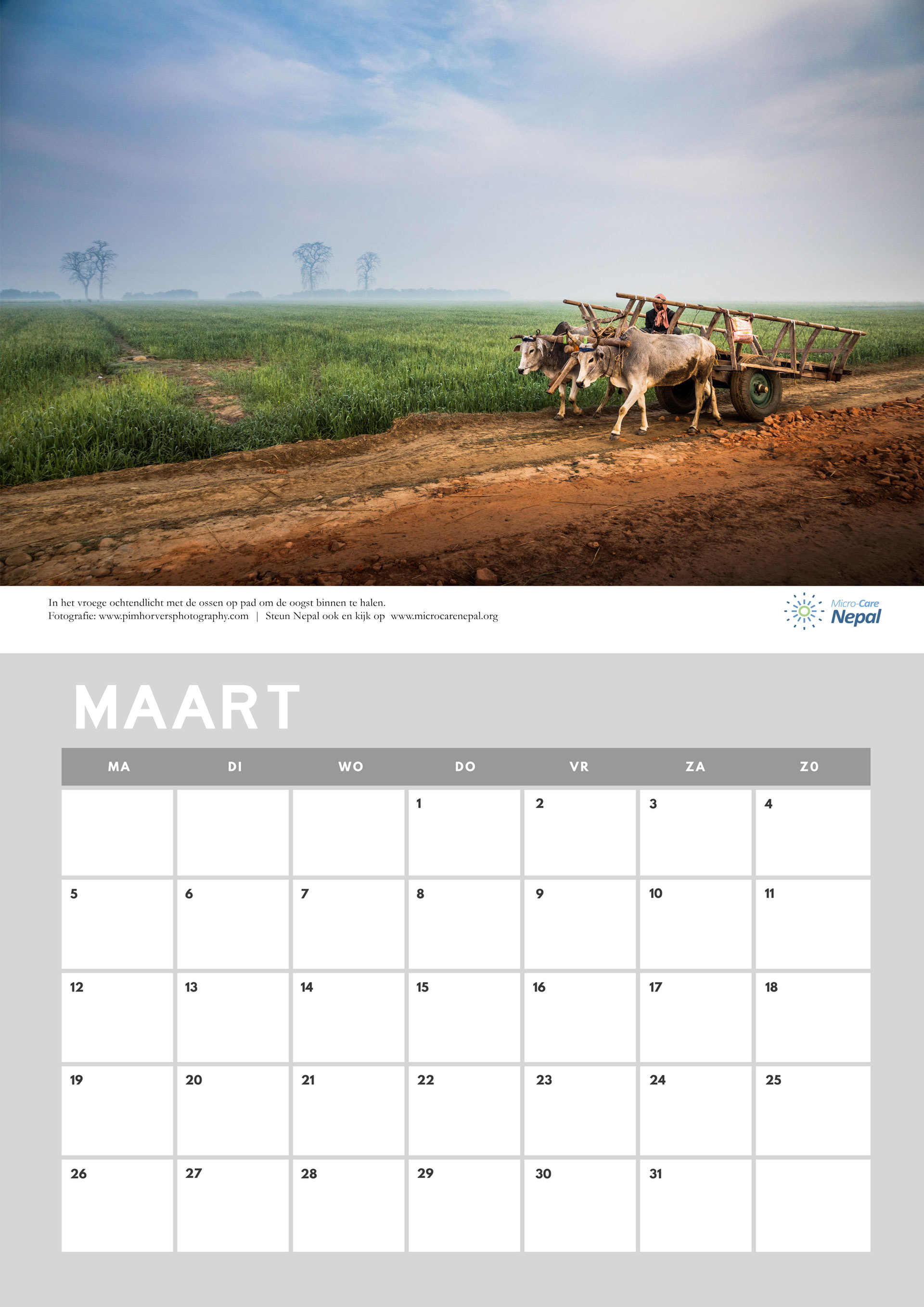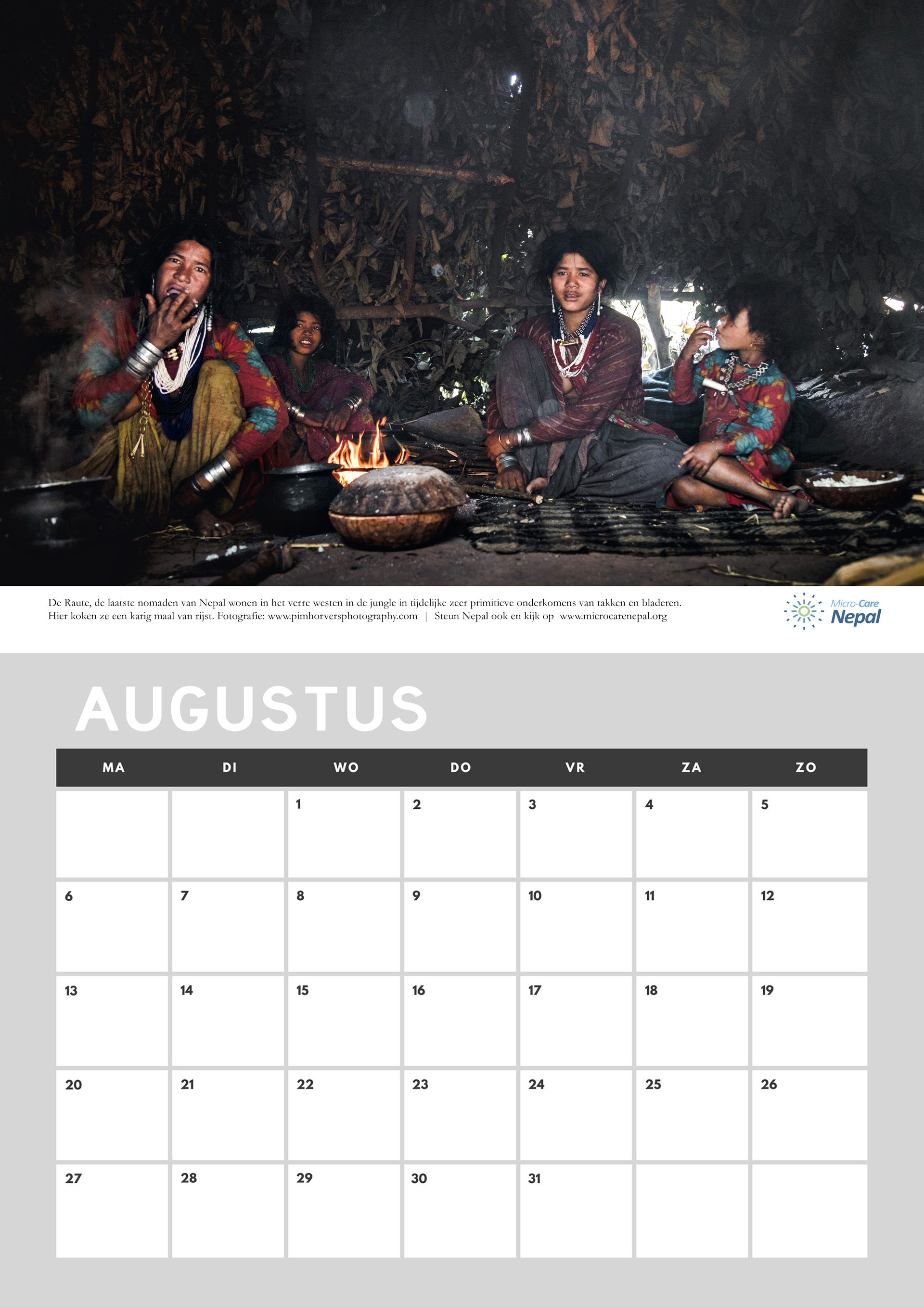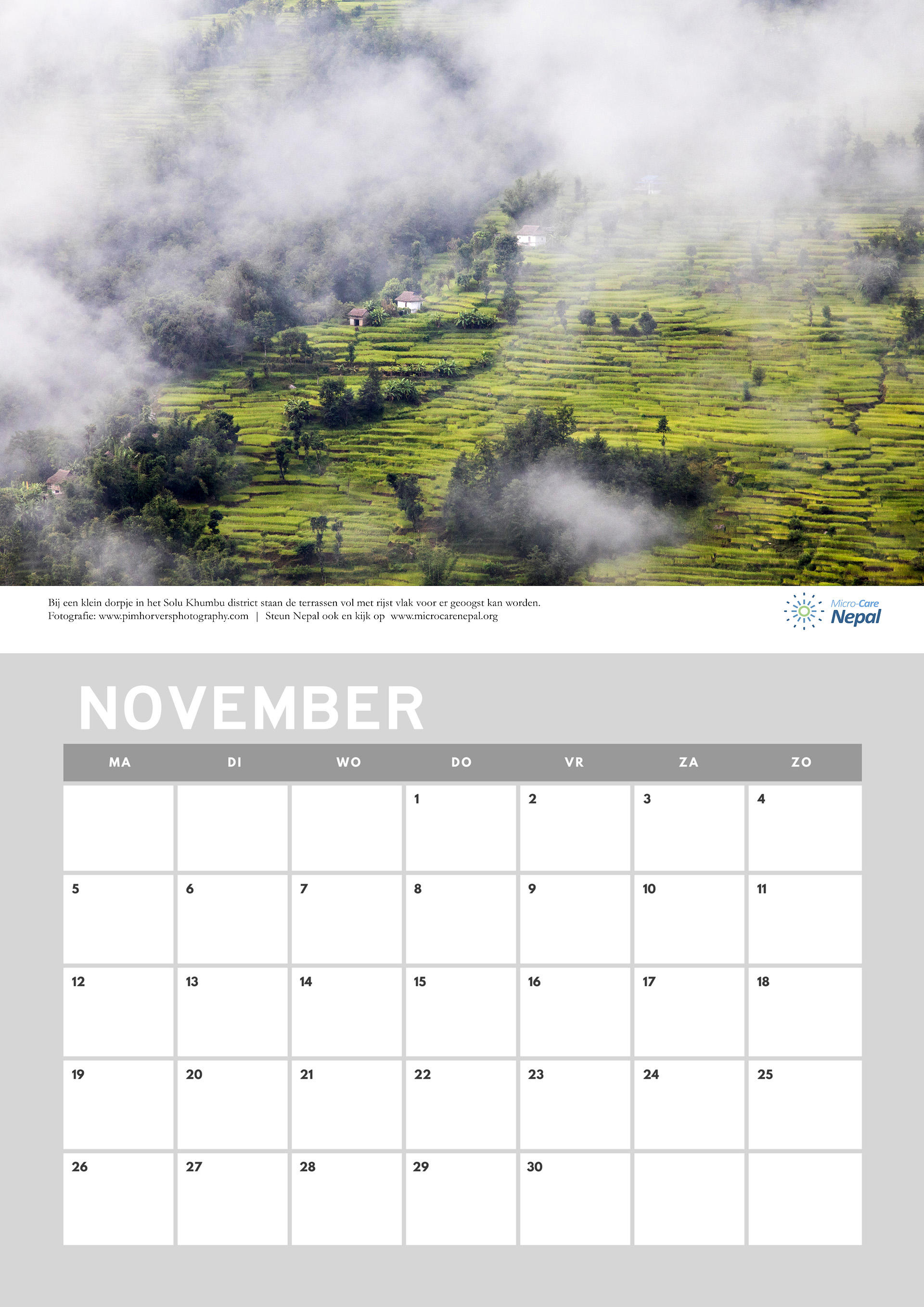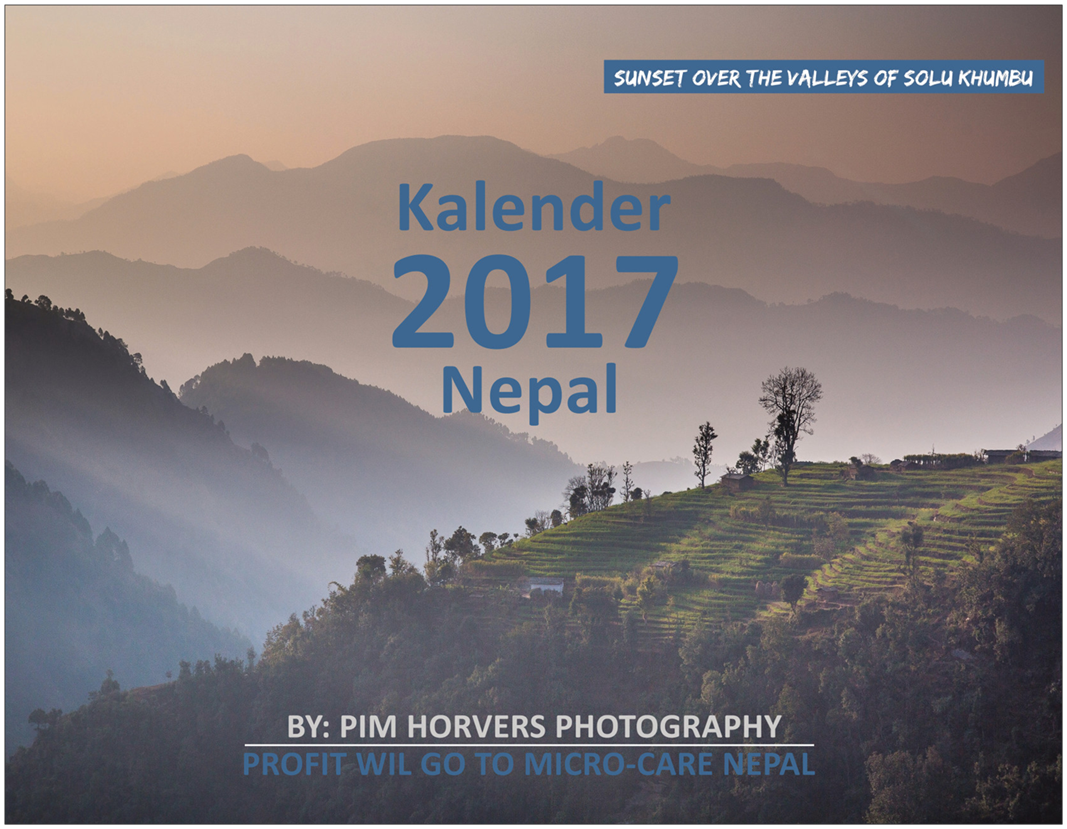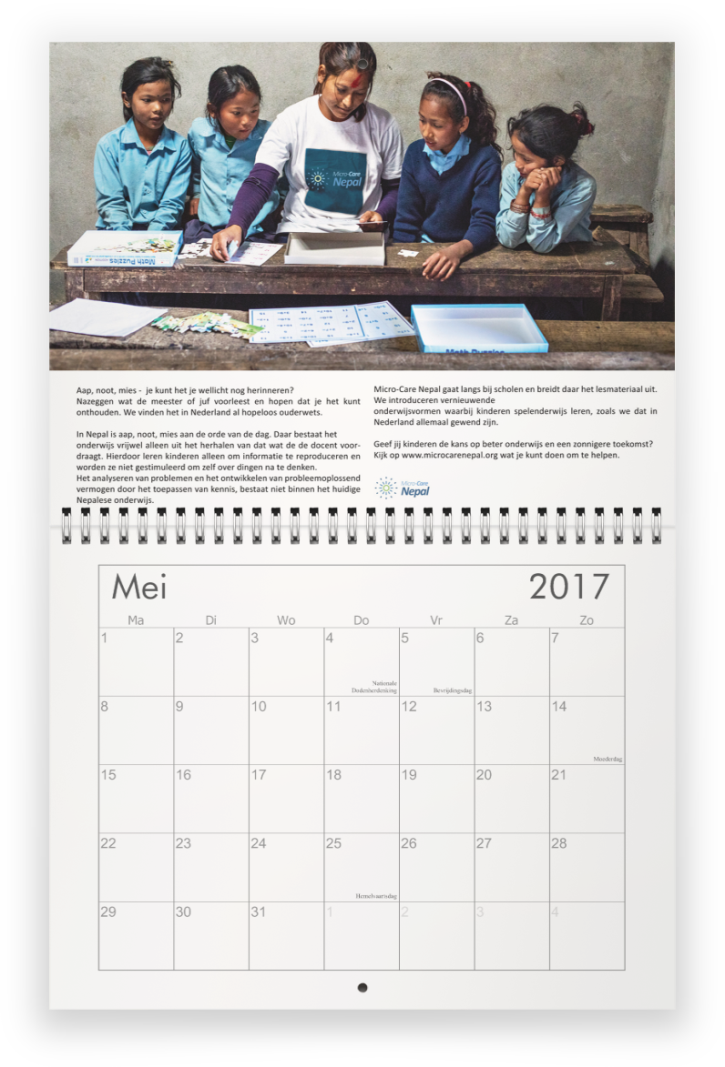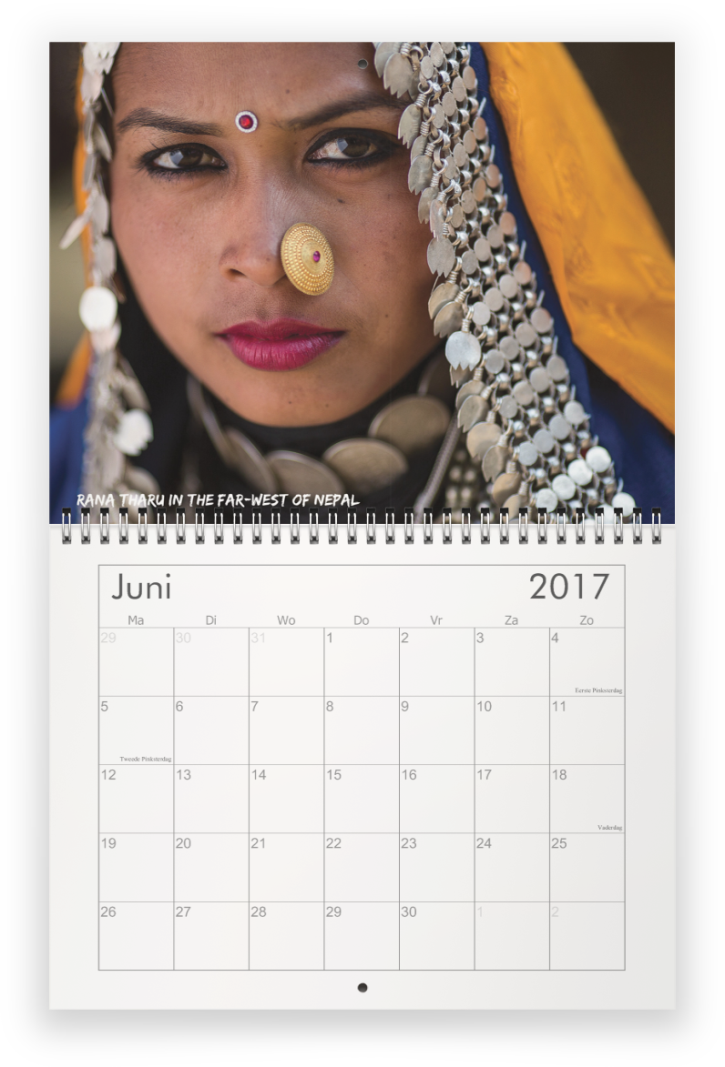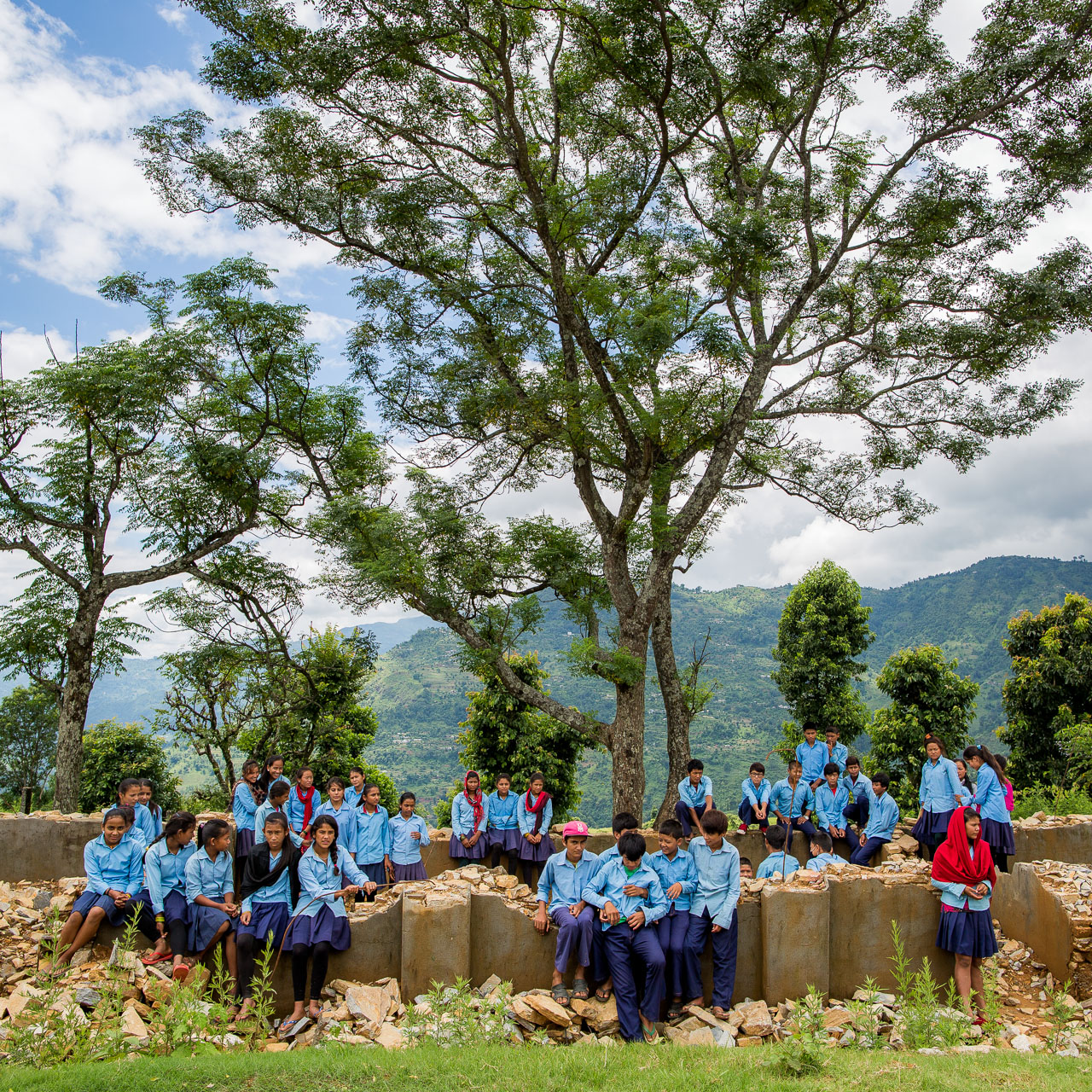Op zondag 30 juni heeft opnieuw het jaarlijkse Nepalese diner plaatsgevonden. Naast een heerlijk diner worden er gedurende de middag een aantal presentaties over de bestedingen en de voortgang van de projecten gegeven. Onderstaand een foto impressie van de middag.
We willen ieder die aanwezig was en heeft bijgedragen dit sponsordiner weer een succes te maken enorm bedanken! In het bijzonder ook de eigenaar en eigenaresse van de gesponsorde locatie “De Mussenberg” in Loon op Zand.
Uitnodiging Jaarlijks Nepalees diner op Zondag 30 juni 2019
Hierbij willen wij onze donateurs, sponsoren en andere enthousiastelingen van harte uitnodigen voor ons jaarlijkse Nepalese diner. Tijdens deze zondag middag 30 juni zullen wij tevens onze jaarlijkse update geven van de voortgang van onze projecten in Nepal en de plannen voor het aankomende jaar uiteenzetten.
We hopen dan ook van harte dat we jou op deze dag mogen verwelkomen en van de bijzondere smaken uit de Nepalese keuken mogen laten genieten.
Roeien voor Nepal
De Ringvaart Roeimarathon voor het goede doel in Nepal
In juli 2018 besloten Maarten en Hidde mee te doen aan een helse roeimarathon van wel 100 kilometer. Bij deze sportieve uitdaging vergaten zij het kiezen van een goed doel niet. We waren blij te horen dat zij graag onze projecten in Nepal wilde ondersteunen met uiteindelijk een geweldig bedrag van € 727,07.
We willen Hidde en Maarten via deze weg nogmaals ontzettend bedanken en hopen dat dit initiatief anderen ook weer motiveert om een sportief evenement op te dragen aan een goed doel.
Lees onderstaand Maarten en Hidde hun verslag:
Ietwat halsoverkop besloten Hidde en ik ons in december 2017 in te schrijven voor de ringvaart. Een roeimarathon van 100km vanaf Leiderdorp, om Schiphol heen, terug naar Delft. Wij hadden het jaar ervoor al met elkaar geroeid dus wij wilden graag een nummer met wat extra uitdaging, de twee-zonder staat dan al gauw bovenaan het lijstje. Wij wilden echter naast onszelf ook iets voor een bewijzen, dus begon de zoektocht naar een goed doel. Het liefst wilden wij ons inzetten voor een kleine organisatie en toen ik hier met mijn oom Gert over sprak stelde hij voor dat we contact op zouden nemen met Micro-Care Nepal.
Na Pim in te lichten over onze campagne zijn wij begonnen met geld inzamelen. Bijna al onze studentenvrienden, die toch wat krap bij kas zitten, hebben we zover gekregen om een bijdrage te leveren. Uiteindelijk bedraagt de eindstand €727,07! Dit hadden we zelf nooit voor mogelijk gehouden, maar onwijs gaaf dat we op deze manier ons steentje kunnen bijdragen aan de projecten in Nepal.
Wij hopen dat we met onze actie andere studenten kunnen inspireren om ook in actie te komen voor goede doelen! Het is allereerst een enorme overwinning voor jezelf, maar door het steunen van een goed doel trap je toch even net dat ene beetje harder.
Maarten
---
De ringvaart, wat een tocht!
Opgewekt stonden we 6 juni 2018 in alle vroegte op, de laatste bak koffie werd onderweg naar Leiderdorp opgedronken en keurig op tijd stonden we aan de start. Vol goed vertrouwen begonnen we aan de duizelingwekkende route.
Om iets over zeven roeien we onder de eerste brug door en daar begon de warming-up. Althans dat zeiden we tegen elkaar: de eerste 50 kilometers zijn gratis en moeten zonder problemen verlopen, daarna begint het pas. Ondanks een nat pak door een inschattingsfout bij een iets te smal brug gat op 40 kilometer, bleek die tactiek te werken. We haalden zonder veel moeite de 50 kilometer, helaas bleken de volgende 50 echt tegen te vallen. Rond het 60 kilometer punt vond ik het zelf mentaal het zwaarste, vermoeidheid begon een grote rol te spelen en metaal was het lastig door de zware 40 kilometer die nog zouden moeten volgen.
De boot waarin wij roeide, 2 persoons met ieder 1 riem(zogenaamd 2 zonder), begon zich te bewijzen als het zwaarste nummer, iedereen haalde ons in en er verstreken jaren aan tijd zo leek het. Om voor 12 uur s avonds in Delft aan te komen worden allen boten die na half 7 nog niet het 73 kilometer punt gepasseerd zijn gediskwalificeerd. Door ons matige tempo betekende dit dat we ontzettend moesten haasten voor dit checkpoint, gelukkig met succes. Deze krachtsinspanning had echter het beste van ons beide geëist en zorgde ervoor dat het stuk erna tussen 73 en 88 kilometer ons absolute dieptepunt werd. Met moeizame halen en aan het einde van ons latijn kwamen we aan in Leidschendam, na de massage tafels en rustpauze vertrokken we als allerlaatste deelnemer richting Delft. Eenmaal op het water konden we de finish ruiken en met een Red Bull op en een Snicker in de zak knalde we de laatste 12 kilometer er in hoog tempo uit. De kilometers in het stikdonker door Delft vlak voor de finish ga ik nooit meer vergeten, het bewijst dat je altijd meer kunt doen dan je zelf voor mogelijk houdt!
Ik kan het iedereen aanraden om een uitdaging als de onze aan te gaan. Om jezelf te leren kennen en zeker ook om een goed doel als Micro-Care Nepal mee te ondersteunen. We hebben een ongelofelijk avontuur beleefd en ik ben erg trots op Maarten dat we samen deze prestatie hebben neergezet.
Hidde
2019 Kalenders
nu online te bestellen!
STEUN ONZE PROJECTEN en KOOP DE 2019 KALENDER
OOK DIT JAAR HEBBEN WE WEER EEN PRACHTIGE KALENDER MET NEPALESE FOTO'S.
BELEEF IN 2019 DE SFEREN VAN NEPAL OOK THUIS, ZELFS ALS JE NEPAL MOET MISSEN.
Goed om te weten is dat je door het kopen van deze kalender de projecten van Micro-Care Nepal ook ondersteund. Zowel financieel als door het onder de aandacht brengen van de hulp die nodig is in Nepal.
De kalender is ook dit jaar weer in A4 formaat
De kosten zijn ook nu weer 15,- per kalender
“Koop bewust. De opbrengst van de verkoop van onze kalender gaat naar onze projecten in Nepal!”
Bestel nu en ontvang een extra setje van
5 Ansichtkaarten Gratis.
Bestel meerdere exemplaren voor
een gereduceerde prijs
Je kunt de kalenders in de volgende aantallen bestellen:
1 kalender 15,- euro
incl. 2- verzendkosten
5 kalenders 66,50 euro
incl. 4,- verzendkosten
10 kalenders 107,- euro
incl. 7,- verzendkosten
€ 15,00 per kalender
€ 12,50 per kalender
€ 10,00 per kalender
Al kerstkaarten? Steun Nepal ook met ansichtkaarten
10 ansichtkaarten voor 10,- Euro
Nu in combinatie met kalender incl. 1,50 verzendkosten
25 ansichtkaarten voor 20,- Euro
Nu in combinatie met kalender incl. 4,00 verzendkosten
Arrival of our Parcel in Nepal with: clothing, shoes, schoolbags and First-Aid Materials
We are happy to report that after 3 months in the Netherlands we are back at work in Nepal. Before flying to Nepal we prepared 3 packages with a total weight of 192 kg.
150 kg of clothing containing more then 750 piece of clothing for babies, children and some for adults. 25 kg with more then 50 pairs of children shoes. 15 kg of bandages for first-aid training purposes.
We want to thank all our individual sponsors for clothing and especially the financial donations to make this possible!
We are looking forward to distribute this clothing to hundreds of children and their elders in the next months. We will keep you updates with photos of their smiles at the time they receive a piece of clothing or shoes.
The costs for transportation are € 960, and € 350, for import tax at the customs office in Nepal. This means an average of € 1, per clothing piece. Still it's impossible to buy good quality clothing for this amount in Nepal. Because of these costs we share clothing sponsors to donate € 5, per kg of donated clothing.
Uitnodiging Nepalees diner + Lezingen over onze projecten
Vlog from the Upper Arun Valley, East Nepal.
Short vlog from the Upper-Arun Vally during the december 2017 support.
Founder Pim Horvers explains about the use of donations for school material and handing over clothing in the remote area of Upper-Arun in Nepal.
More about the support that have been given in the remote area of the Upper-Arun will be represented at the yearly Nepali dinner program that will be take place in the spring of 2018. This year we also have an event planned in the surrounding of Amsterdam!
Kalender(s) 2018
Steun onze projecten door onze jaarlijkse kalender te kopen
Ook dit jaar hebben we weer een prachtige kalender met Nepalese foto's.
Beleef in 2018 de sferen van Nepal ook thuis, zelfs als je Nepal moet missen.
“Koop bewust. De opbrengst van de verkoop van onze kalender gaat naar onze projecten in Nepal!”
Goed om te weten is dat je hiermee Micro-Care Nepal ook ondersteund, zowel financieel als door Nepal onder de aandacht van mensen te brengen die onze projecten nog niet kennen.
De kalender is dit jaar weer in A-4 formaat.
De kosten zijn 15 euro per kalender inclusief 2 euro verzendkosten.
Je kunt de kalenders in de volgende aantallen en tegen de volgende gereduceerde tarieven bestellen:
KOSTEN VOORVERKOOP KALENDER 2018
€ 15,00 per kalender
€ 14,00 per kalender
€ 12,50 per kalender
€ 11,00 per kalender
€ 10,50 per kalender
€ 9,50 per kalender
1 kalender 15,- Euro incl. 2,- verzendkosten
5 kalenders 74,- Euro incl. 4,- verzendkosten
10 kalenders 132,- Euro incl. 7,- verzendkosten
25 kalenders 282,- Euro incl. 7,- verzendkosten
50 kalenders 538,50 Euro incl. 13,50 verzendkosten
100 kalenders 963,50 Euro incl. 13,50 verzendkosten
AL KERSTKAARTEN? STEUN NEPAL OOK MET ANSICHTKAARTEN
10 ansichtkaarten voor 10,- Euro Nu in combinatie met kalender incl. 1,50 verzendkosten
25 ansichtkaarten voor 20,- Euro Nu in combinatie met kalender incl. 4,00 verzendkosten
Opnieuw een geslaagd Nepalees Diner
Afgelopen zondag heeft Micro-Care Nepal opnieuw een compleet verzorgd Nepalees diner verzorgd. Dit keer voor ruim 30 personen en gedurende de middag zijn er verschillende presentaties gegeven. Onder ander oprichter van de stichting, Pim Horvers kwam uitgebreid aan het woordt over de vorderingen van projecten in het afgelopen jaar. Een van de de doelen, het informeren van de leden, donateurs en sponsoren over de ontwikkelingen in Nepal.
Na een traditionele Nepalese welkomsceremonie begon het programma met bij aanvang heerlijke snacks waaronder gefrituurde momo's en gebakken chop. Een heerlijke bananen lassie bracht verkoeling.
Bekjk hier de presentatie gegeven door oprichter Pim Horvers.
Nieuw: 2017 Kalenders
Steun onze projecten in Nepal. Bestel nu online de nieuwe kalenders voor 2017!
Nepalese Diner Avond
Bekijk onderstaand het fotoverslag van het Nepalese Diner 2016
UITNODIGING NEPALEES DINER
(Klik om groter te bekijken)
UITNODIGING NEPALEES DINER
// NIEUWSBRIEF MICRO-CARE NEPAL //
Het is weer enige tijd geleden dat je een bericht van ons hebt ontvangen. Het is een intensieve periode geweest waarin we zowel veel vooruitgang hebben kunnen boeken in onze projecten als ook plannen hebben kunnen maken voor de rest van 2016. Van november tot ongeveer maart 2017 zal ik zelf ook weer naar Nepal afreizen. Afgelopen jaar werd ik in Nepal ondersteund door vrijwilliger Danja Raven en dit keer ondersteund door vrijwilliger, Gert Groenewoud. Wil jij ook met ons op pad als vrijwilliger? Stuur dan een mail naar info@microcarenepal.org.
Inmiddels is het meer dan een jaar geleden dat de aardbevingen Nepal troffen. Gelukkig is er veel aandacht voor geweest in de media. Belangrijk te benoemen is dat door de Nepalese overheid pas 1/3 van de hulpgelden is gebruikt. Zowel in de hoofdstad Kathmandu als in de dorpen in de rurale gebieden leven nog steeds duizenden mensen onder plastic zeiltjes. Met het naderende regenseizoen (de moesson) staat er voor deze mensen weer een zware tijd te wachten. Micro-Care Nepal wil door middel van ontspannen en interessante activiteiten je aandacht en bijdrage blijven vragen voor Nepal.
Uitnodiging diner
Graag willen wij je uitnodigen voor een Traditioneel Nepalees diner op zondag 24 juli waarop ik (Pim), door middel van een presentatie tevens een update zal geven van de huidige situatie en de voortgang van onze projecten in Nepal. Vanzelfsprekend staat het diner geheel in teken van Nepal. Het traditionele 5 gangen diner (onderstaand verder toegelicht) zal worden bereid door Sanjhana Bishankhe.
Schrijf je nu hier in.
-----------------------------------------------------------------------------------------------------------------------------------------------------------------------
Even voorstellen: “Sanjhana Bishankhe”
Sinds vorig jaar is Sanjhana mijn partner en ondersteund zij onze projecten in Nepal. De meesten hebben haar al voorbij zien komen in de eerdere Facebook berichten of de nieuws artikelen op onze website.
Sanjhana is afkomstig uit het in de Kathmandu vallei gelegen dorp Satungal. Na het behalen van de bachelor sociologie heeft ze ervaring opgedaan tijdens projecten in het onderwijs en voor andere hulpverlening organisaties. Zij is voor Micro-Care Nepal een belangrijke schakel in zowel de taal als bij de aanpak van onze projecten.
----------------------------------------------------------------------------------------------
Diner; voor een beter Nepal
De kosten voor het diner op deze feestelijke Nepalese avond bedragen 50 euro (exclusief kook workshop). Naast het dekken van de kosten voor deze avond gaat meer dan de helft van dit bedrag naar de stichting om ons zo de mogelijkheid te geven onze projecten voort te blijven zetten. Voor kinderen is er rijstpudding en een toetje, dus kom gerust met het gezin. Tijdens de avond is er ook een veiling waarbij er traditionele Nepalese producten en fotowerken worden aangeboden. Schrijf je nu hier in.
Kook workshop
Voorafgaand aan het diner (15:00 uur) is er de mogelijkheid om deel te nemen aan een kook workshop. Sanjhana leert je dan de geheimen om de meest heerlijke momo’s (dumplings), pakoda’s en samosa’s te maken.
Graag vooraf hier inschrijven, bijdrage 5 euro p.p.
-----------------------------------------------------------------------------------------------------------------------------------------------------------------------
Afscheid Sanjhana
Het diner zal ook het afscheid worden van Sanjhana voor haar vertrek terug naar Nepal. Helaas hebben we niet voldoende tijd gehad alle vrienden en kennissen te bezoeken. Om deze reden bedachten we ook dat het goed zou zijn om iedereen uit te nodigen om op deze wijze elkaar toch nog te kunnen ontmoeten.
Korting voor donateurs en sponsoren
Heb jij Micro-Care Nepal in 2016 al ondersteund met een financiële bijdrage?
Kom dan voor het gereduceerde bedrag van 25 euro om de kosten voor deze avond te dekken.
Schrijf je nu hier in voor het Nepalese Diner.
We hopen op je aanwezigheid en danken je voor je steun aan Nepal!
Tot 24 juli!
Met vriendelijke groeten,
Pim Horvers,
En overige bestuursleden van Micro-Care Nepal
-----------------------------------------------------------------------------------------------------------------------
Menu
Tijdens deze avond ervaar je de veelzijdigheid van de Nepalese keuken waarin de gerechten van verschillende bevolkingsgroepen zich kenmerken door hun specifieke kruiden en ingrediënten.
Dit menu is een klein voorproefje op de recepten welke opgenomen zullen zijn in het kookboek wat Samjhana volgend jaar zal presenteren.
1) Voorgerecht:
Nepali Snacks: Momo, Samosa en Pakora
Momo's zijn gemaakt van een eenvoudige deeg van bloem met water. De vulling kan uit verschillende ingrediënten bestaan en in dit geval kiezen wij voor een vegetarische momo.
Pakora is een gefrituurde snack van verse groenten wat wordt gemixt met een beslag van bloem van kikkererwten en ten slotte wordt gefrituurd.
Een Samosa is een driehoekig gefrituurd gebakje wat meestal bestaat uit een omhulsel van filodeeg of bladerdeeg en is gevuld met een mengsel van aardappelen, ui, erwten, koriander en kikkererwten of soms ook kippenvlees.
2) Soep:
Tibetaanse Thukpa met Phaparko (Boekweit) Roti
Thukpa is een Tibetaanse soep met pasta en groente en is populair onder alle Tibetanen. De Nepalese variant van Thukpa bevat chili poeder en garam masala wat de soep een pittig karakter geeft. Door de grote hoeveelheid Tibetaanse vluchtelingen is de Thukpa zoals deze in de Kathmandu Vallei bereid wordt is het meest vergelijkbaar met de soep in uit Tibet.
3) Hoofdgerecht:
Newari Khaja-set
De Newar of de Newari is de bevolking welke van oudsher in de Kathmandu vallei wonen. Naast een zeer rijke en gevarieerde cultuur en tradities hebben de Newar ook hun eigen specifieke gerechten welke een belangrijk onderdeel vormen tijdens religieuze rituelen en festivals.
4) Nagerecht:
Khir Rice Pudding
Khir is een van de meest favoriete recepten in Nepal en vormt veelal een belangrijk onderdeel in feesten en ceremonies, van bruiloften tot crematies.
5) Nagerecht:
Khoya Barfi gebakje
Het zoete koekje Khoya Barfi wordt gemaakt van ingedikte melk en in ons geval van natuurlijke zoetmakers.
Al trek gekregen?
Schrijf je nu hier in voor het Nepalese diner.
Lezing op de NKBV Bersportdag
Onlangs gaf ik een lezing op de jaarlijkse Bergsportdag Nederlandse Klim en Bergsportvereniging (NKBV) over onze recente werkzaamheden in Nepal.
Ook hadden we een stand op het Nepal plein waar we uitleg gaven over de huidige situatie in Nepal, onze actuele werkzaamheden in Nepal en hoe ieder ons kan helpen.
NEPAL NA DE AARDBEVING | Presentatie, Expositie en Proeverij | 27 dec & 30 dec:
Drink Chaiger Bier voor Nepal
CHAIGER BIER DOOR RAMSESBIER
Een groot deel van de opbrengt van dit bier gaat naar Micro-Care Nepal. Het bier is tot stand gekomen in de samenwerking met Ramsesbier en gebrouwen in zijn brouwerij.
Chaiger is de "Den Dorstige Tijger" van Ramsesbier waaraan voor het bottelen Nepalese Chai kruiden zijn toegevoegd welke voor de bekende indiaase Chai Thee worden gebruikt. De voornaamste ingrediënten zijn: kaneel, kardemom, kruidnagel, gember en zwarte peper.
Het bier is een India Pale (IPA) welke traditioneel sterk gehopt is. Het gebruik van hop als conserveringsmiddel, om een lange boottocht te kunnen doorstaan, is een oude Nederlandse truc. Dit gebruik is met goed resultaat overgenomen door de Engelse brouwers.
Single Hop US centennial
Om de hopsensatie specifieker te maken is slechts een hopsoort gebruikt: De Hop is 120 minuten continu toegevoegd.
Dry hop
Het toevoegen van extra hop tijdens de lagering versterkt de hop smaak en de hop geur zonder het bier bitterder te maken.
Deze India Pale Ale is gebrouwen door Ramses Snoeij
6% Proost!
Publication in Magazine 'Hoogtelijn' from the Dutch Mountaineering Association (NKBV)
Click on image to see larger.
If you want to read it please click here and go to page 48 till 52.
Publication with credits to Micro-Care Nepal in the Magazine 'Hoogtelijn' from the Dutch Mountaineering Association (NKBV). About initiatives for support in Nepal.
My initial writing for the publication was to my opinion more interesting:
In Kathmandu, the UNESCO World Heritage site of 'Durbar Square' in the centre of the city. The work has started to clean up the chaotic mess that the earthquakes left. As shown in the image, Nepal isn't ready for the real rebuilding.
Durbar Square, Kathmandu, Nepal after the earthquake.
Everywhere in and around the city are many tent camps sheltering people who lost their homes or are too afraid of new earthquakes. Remember that there are still strong aftershocks every week. Luckily there is enough water and food now.
People in shelter camps at Tara Goan Park, Kathmandu.
Blocked door in Durbar Square, Kathmandu.
This photo shows the enormous damage. The two workers underneath the half collapsed building don't know where to start cleaning up this mess. Most have collapsed but some parts of these beautiful and traditional buildings are still there. They are trying to stabilize the ruins while waiting until the end of the heavy rain season. The heavy rain and weekly aftershocks of 4 and above create a big risk that parts still standing will collapse.
People in shelter camps at Tara Goan Park, Kathmandu.
Restoration on walls.
In some places of the city walls are being rebuilt and if possible parts are being repaired. At the ticket counter of the popular tourist area 'Durbar Square' where it's usually crowded with tourists now you can hardly find any visitors. Stones that are collected from the ruins are piled up to be reused later in the rebuilding. Wooden parts with engravings have to be recovered and will be used piece by piece for the restorations. The actual rebuilding will take years....
Demolishing concrete floors by hand that had collapsed during the earthquakes.
Special thanks go out to Peter Daalder from the NKBV for creating awareness of the problems and the support that is still needed in Nepal.
-------------------------------------------------------------------------------------------------------------------------
Nederlandse vertaling:
Publicatie met vermelding naar Micro-Care Nepal in het blad 'Hoogtelijn' van de Nederlandse Klim en Bergsport Vereniging (NKBV). Over hulp initiatieven in Nepal.
Dank aan Peter Daalder van de NKBV voor de goede initiatieven voor hulp aan Nepal!
De inzending voor de publicatie was naar mijn mening een interessante aanvulling op de plaatsing:
"In Kathmandu het culturele UNESCO Wereld erfgoed Durbar Square in het centrum van de stad, wordt inmiddels gewerkt aan het opruimen van de chaos. Helaas in Nepal nog niet klaar voor daadwerkelijke wederopbouw. Overal in de stad zijn nog tentenkampen te vinden waar mensen die hun huis verloren zijn, hun huis op instorten staat of simpelweg uit angst voor nieuwe aardbevingen niet terug durven naar hun huizen. Water en voeding is er gelukkig voldoende in de stad.
Bijgevoegde foto laten zien dat de schade groot is en specifiek laat de foto waar de twee werkers onderaan een half ingestort gebouw naar mijn mening goed zien dat men soms niet weet waar te beginnen. Delen van deze prachtige bouwwerken zijn ingestort en andere delen staan nog overeind. Door middel van het stutten van de gebouwen wordt het grootste deel van de herstelwerkzaamheden uitgesteld tot na het regenseizoen. De grote hoeveelheden regen in samenspel met de wekelijkse naschokken van 4 op de schaal van richter en hoger zorgen voor een groot gevaar dat veel gebouwen nog verder instorten.
Op sommige plaatsen in de stad worden muren opnieuw opgebouwd en worden voegen hersteld.
Aan de ticket counter bij het normaal zo toeristische Durbar Square is het nu maar zelden een toerist te zien. Stenen welke verzameld zijn uit de puinhoop liggen opgestapeld klaar om later opnieuw gebruikt ta gaan worden. De nog bruikbare delen zullen stuk voor stuk gebruikt worden voor de restauratie. Het herstel zal dus nog jaren gaan duren. "
Visiting the Shree Himal Higher Secondary School in Simjung.
All the students amongst the ruins of their school.
Climb from Baluwa to Simjung
I had met Pranjali Gurung the previous day and she introduced me to her brother who was the Village Secretary of Baluwa and had been hired as a social worker by Oxfam. Hewas going up to Simjung the next morning to handover some health promotion posters. I decided to join him because I wanted to see for myself the damage caused by the earthquake and how the people were coping with the aftermath.
Students in their temporary tent classrooms donated by the Indian Army.
Social worker for Oxam who wanted to guide me to Simjung.
I was told most NGOs hadn’t visited Simjung as they all were going to the bigger and more easily accessible village of Barpak.
The day before I had met a few teachers from the Shree Himalaya Higher Secondary School in Simjung. They told me that they only had temporary school buildings and that there was no funding available to pay permanent buildings for school. I was invited to visit their school and hear their story.
Girl on her way to school, cooling herself with her scarf. She was the daughter of the family with whom I stayed in Baluwa.
Teacher leading the morning school Assembly.
It was a long and extremely hot 600 metre climb up to the village of Simjung. I wasn't thinking about myself but these children that were joining us in the walk up. They had to walk one and a half hours up to school and later one hour all the way back down to their homes, six days a week. As schools in Nepal start at ten o'clock, they had to start walking at half past eight. Sunrise at this time of the year is around five o'clock and by nine o’clock the temperature has already reached thirty five degrees. All the children were using umbrellas to try to shield themselves from the burning sun. We stopped 3 time in the shade to recover. They had were laughing and giggling but unfortunately it was hard for me to understand.
Children exercising at their morning assembly.
Arriving at school in the morning I observed their morning assembly. The English teacher explained what was happening and after the assembly guided me around the ruins of the old school.
Lined up from youngest to oldest. The school day begins like this every morning, in every school across Nepal.
The principal of the Shree Himalaya Higher Secondary School standing amongst all that remains of their once beautiful school building.
INTERVIEW AT THE HIGHER SECONDARY SCHOOL IN SIMJUNG.
Students showing me the remains of their school benches. They are hoping for funding so they can buy material to repair them.
All the school’s buildings were destroyed. In total 19 classrooms were lost. The Nepali government has given 3 lakh (300 000) rupees (about € 2750).This money was only enough to build 10 temporary classrooms out of tin. The rest of the classes are still given in 10 tents donated by the Indian Army. A German man named Gunther gave school teaching materials including whiteboards, a globe and pencils.
Photo taken from the outside of the school window of the 8th class. School windows in Nepal are always covered by bars.
The tin buildings get extremely hot in the strong summer sun. Temperatures rise to above 35 degrees in the classrooms and there is no ventilation besides a few windows. The English teacher explained to me that after a few months the cold winter season will start. Temperatures here in this mountain area will drop to between 5 and 10 degrees. The thin buildings will not give sufficient shelter against the strong cold winds. Because of this the teacher asked for support for the village school. The Nepali government will not provide more help at this time and it is very uncertain whether it will provide any further help in the future.
Third class with their teacher.
Extra lessons given to three 11th Class students.
The babies of the school - 2nd Class.
I was told the villagers were lucky because the earthquake came on Saturday which is a holiday. All the teachers lost their homes and some had family members injured. After the earthquake their first priorities had been to take care of their families, find and arrange food and build temporary shelters.
Boys from 6th class.
Namaste: The traditional gesture of greeting with hands held together and raised in respect.
Girls reading from their books.
Three days after the earthquake all teachers gathered together and went to see what the earthquake had done to their school. They found a disaster. The buildings had collapsed. Gone were the desks, chairs, computers, whiteboards, books, and posters. The solar panels which provided enough power for small lights in classrooms had been smashed.
Seventh class.
Secondary level English teacher with the girls from his class. Boys and girls are taught separately in all governmentschools.
Teaching 5th Class in one of the tents donated by the Indian Army.
The remains of the school’s computers. Now they have to try and teach without them.
In the staff tent the teachers were eating biscuits that were provided by the wfp.org NGO.
The teachers wrote a letter for me to ask for help. I will try to publish it in the Netherlands. It became clear to me that Simjing has missed out on assistance with most of the aid going to Barpak and Laprak because they are accessible by road.
Principal, teacher and his class in their tent donated by the Indian Army.
During lunch break I asked the students to gather on the ruins of their old school building for a group photo. The first photo is just two classes together in their old classrooms. Following to this all 400 students gathered at the remains of their school (see first photo of this post).
Children from three classes in the ruins of their classrooms.
Children in the remains of their classrooms.
Girl standing in front of her temporary tin classroom.
Girl posing in front of her classroom. The school benches in the background, twisted by the destructive force of the earthquake, are in need of some maintenance.
Most of the children at the school are and happy that they can go to school again as their education was interrupted for two months after the earthquake.
All that remains of the school’s precious stock of text books
After visiting the school with them we walked further through the village of Simjung. Buddhist prayer flags were flapping in the breeze. But where before a little Buddhist temple stood there was now only a pile of stones and the broken top of the temple. I looked around the place and found many ruined textbooks and student’s exercise books.
Students arriving home in their village.
Child passing all that remains of her house every morning going to school and every afternoon returning home. The look on her face shows her feelings…
Started our Dutch NGO work from Kathmandu, Nepal.
Where to start with such a disaster?
The shock arriving in Nepal wasn't too big. My friend and Board of Advice member for the foundation, Rohit Phuyal, was waiting to pick me up. On the road from the airport to Kapan area were several collapsed buildings. It was more of a shock to see people living in little plastic tents and shelters in very basic and dirty circumstances. This reminded me of the way that many people in poor areas in India live.
Back to Kathmandu with mothers with children begging on the streets, here at the entrance to the shopping malls on New Road.
Before I came to Nepal I had read and heard many terrifying and shocking stories about the people who were injured and killed in the earthquakes. It had even more of an impact on me to hear how body parts, arms, legs and heads had to be dug out from between the collapsed concrete buildings. Bearing this in mind it was even more daunting to see with my own eyes what this earthquake had done to the lives of so many people and families.
In after earthquake Kathmandu the people are taking it slow because all this restoration work can't be done in one lifetime..
Luckily the Nepali people are very optimistic people and are used to living in poor and basic circumstances. They are slowly starting to remove all the devastated buildings and in some places they are starting to repair existing buildings or build new buildings. Unfortunately the government has not been active in organizing the a rebuilding programme. There are also only few material resources like excavators so much of the work has to be done by hand.
Demolishing concrete from a collapsed building. This will make space for a new building and the old building materials will be reused.
Camps where families still live under plastic.
Now in the monsoon season it is hot here in Nepal. People are using umbrellas to protect themselves against the burning sun.
We will soon leave for the Solu Khumbu district to visit the big but remote village of Necha. Here we will start our projects as we have a lot of good contacts there. I have visited Necha twice in the past 3 years. The village is spread out over a complete mountain side from the bottom of the river side to the top of the mountain. Most of it is agricultural land with traditional farming. Most of the houses are made of mountain stones and mud or from bamboo and mud.
Life continues and rickshaw drivers again cycle past the destroyed Gaddi Baithak in Basantapur Durbar Square. This European style building was built as a part of the palace in the early twentieth century.
Our plan:
- Give 50% of the 35 kilo of clothing I took from the Netherlands to poor families.
- Building greenhouses and supplying start up seeds to 3 poor families which will provide them with food all year round.
- Assist local schools to develop nutrition and hygiene courses by providing study materials and resources.
- Establish a partnership between the Necha Community Hospital (supported by the Asian Heritage Foundation) and Micro-Care Nepal Foundation which will enable the hospital doctor to give first aid courses to health teachers from all 16 schools in Necha. In the future we will provide the first aid teaching resources so they can give the first aid course to their students and put knowledge into practice.
- Give photos that I previously took to the people of the village as a memory.
Little boy living with his parents in their temporary house this time provided by the Chinese Red Cross.
Arrived in Kathmandu
Arrived on the 2de in Nepal. Busy: learned to plant the rice nice in the rain, preparing for the projects of the foundation, talking to people, doing research, sorting out the 40 kg of clothing I took with me (gave some to the family I am staying with and one poor family living close, shopping plastic for greenhouse we are going to build, getting first-aid course books in nepali to try to educate the teachers in the mountains, trying to not get to much wet in the hard monsoon rain, survived the first little earthquakes..
Working on a newsletter with more details and of course photos. Tomorrow leaving into the mountain to the village Necha and will be looking for poor families to handover more clothing.
NGO started OFFICIALLY Started and website online
From today our NGO’s website and Facebook page is officially launched. This week we received the bank account number for the foundation so we could finally start.
You can support us in different ways. Please read the Project pages to see more details.
On behalf of the people of Nepal: Thank you for your support!
Donations can be send to:
DONATE
Your donation allows us to support the people of Nepal.
You can choose which projects to support and donate to.
Bank account : NL20 INGB 0006 9530 08
Stichting Micro-Care Nepal
www.microcarenepal.org
